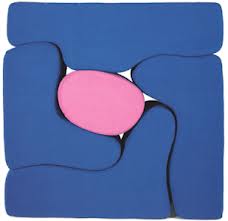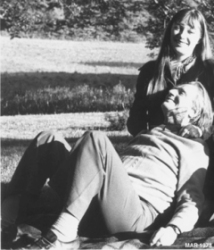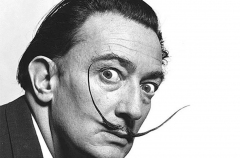
Roberto Matta (1911-2002), the famous Chilean artist, is mainly remembered for his role as a leading member of Surrealism as well as an inspiration for the later Abstract Expressionist movement. Following his arrival in Paris in 1933, Matta found work in the architecture office of Corbusier, and soon became friendly with figures now regarded as among the most influential and avant-garde figures in the Paris (and international) art world. Rene Magritte, Arshile Gorky, Salvadore Dali, and Marcel Duchamp were his intimates and eventually co-members of the Surrealist School, while Andre Breton was an early mentor and influential supporter. Matta achieved great success through the 40s and 50s, although he later broke with the Surrealists due his insistence on infusing his work with political and social commentary. Matta's paintings from this middle perid routinely sell for millions of dollars, and he is regarded both as a leading Latin American painter and as one of the greatest figures of 20th century art. His significance as a designer is based on later projects dating from the 60s, when Matta had renewed his Latin American roots both geographically by moving back to Chile, and psychologically through friendships with prominent Chilean artists such as Garcia-Lorca and Pablo Neruda. His best-known designs are deceptivelysimple, almost whimsical homages to art and life. The Malitte Seating System of 1966 (produced by Gavina Italy & distributed by Knoll), consisting of 4 l-shaped pieces of upholstered foam blocs that are equally appealing stacked as a square or used as a seating group It is an appealing design that combines the playful spirit of PopArt with a fully functional utility. It is his MAgriTTA Chair, however, apparently an homage to Rene Magritte's most famous image, that transforms seating into what is arguably a fully functioning artwork that transcends simple design and utility by combining an iconic Surrealist image with PopArt's celebration of mundane,everyday objects. The user sits on Magritte's apple-filled hat, in effect animating a 3-dimensional rendering of a 2-dimensional image. Unoccupied, a MAgriTTA chairs appears as the familiar 2-dimensional painted image. But when the user sits down, the image becomes a fully 3-dimensional object. It is a bravura design that fully engages the viewer/user, and so embodies Matta's greater ability to balance his fascination with the human psyche with the need to engage with the external world. Matta's legacy is also apparent in the careers of his four artist children, most famously his son Gordon Matta-Clark.




.png)